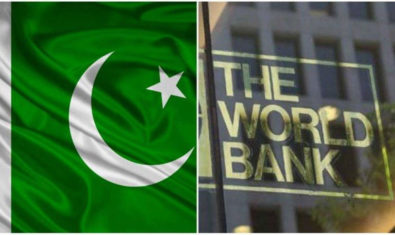For much of the last couple of years, commodity prices, especially those of food and energy, have risen, causing financial hardship for consumers across the globe, especially in developing countries. Changes to global trade, production and consumption patterns in the aftermath of the COVID-19 pandemic that were intensified by the war in Ukraine could keep prices historically high, endangering global food security.
The United Nations-led Black Sea Grain Initiative, aimed at easing global food shortage, was renewed in November for four months. The deal — initially reached in July between Turkey, Ukraine, Russia and the UN — has helped stabilize food prices by allowing exports to resume from three Black Sea ports in Ukraine, but the deal is to expire in March.
More than 11.1 million tons of food materials have been shipped under the accord.
The Reliance Factor
Both Russia and Ukraine accounted for a combined 34% share of 2021 global wheat exports and 17% of maize exports, according to the European Parliamentary Research Service. Their share in the world’s export market for barley was 27% and 55% for sunflower oil. Russia is the world’s top exporter of fertilizers.
Based on 2020 data, Russian and Ukraine control about 27% of the world’s wheat trade and more than half of sunflower oil and seeds global trade, according to a March 2022 report by the UN Conference on Trade and Development (UNCTAD). The war has a chain effect from energy to food supplies to fertilizers. Additionally, a stronger dollar has driven the cost of imports higher.
It’s particularly concerning how the crisis is affecting the food industry. Some nations are especially reliant on agricultural and food products originating from the Russian Federation and Ukraine. According to the UNCTAD, Turkey’s agrifood commodities imports from Russia and Ukraine was at 25% based on 2020 data, followed by China’s 23% dependence. Pakistan’s agrifood commodity imports from Russia and Ukraine were at 4.5%.
Hit to Global Growth Prospects
The UNCTAD said in March that the war could wipe about $1 trillion in foregone income across the globe in 2022.
Global economic activity is experiencing a sharper-than-expected slowdown amid tighter financial conditions and Russia’s invasion of Ukraine, the International Monetary Fund said in its October 2022 outlook. Global growth is expected to slow from 6% in 2021 to 3.2% this year and 2.7% in 2023.
The effects are terrible for the poor all around the world, particularly now that wages for majority of workers are stagnating. It is estimated that this year’s interest rate hikes in the US could slash $360 billion of future income for developing countries, excluding China.
Evidence from Pakistan
There is no doubt that everyone felt the effects of the Russia-Ukraine war, but poorer countries felt them more. Total income from labor as a percentage of GDP is lower in developing countries than developed countries. Pakistan’s exchange rate has depreciated by 17.5% against the US dollar from January 2022 to July 2022.
According to the 2018 Pakistan National Nutrition Survey, 36.9% of our population faced food insecurity. Reuters reported earlier this month that Pakistan approved the import of 450,000 tons of wheat from Russia. This is primarily because floods effected the agri ecosystem of Pakistan and our production-to-utility ratio is not stable.
Based the economic survey report 2021-22, labor employment in Pakistan is trending higher. The number of employed persons increased from 64.03 million in fiscal 2019 to 67.25 million in 2021, while the unemployment rate decreased from 6.9% to 6.3%. Increased labor force participation should depict higher economic activity, but sentiment is low due to higher inflation levels.
The country’s inflation stood at 13.4% in April 2022, versus the target 8% for 2022. The Pakistan Economic Survey highlighted an abnormal increase in global commodity prices especially crude oil and the edible oil. And Pakistan is net importer of these essential items.
As documented by the Pakistan Labor Force Survey 2021-21, 36.5% of labor force earned less than 15,000 rupees per month in 2021.
What Could be done?
Consumers in Pakistan are feeling the pinch from elevated inflation in Pakistan driven by higher commodity prices globally. Purchasing power has been sapped even for the core, essential items needed on a daily basis. Authorities must ensure food availability in the aftermath of floods and the war, as well as price stability, with a particular focus on addressing the nutrition needs of people in the low-income band.
It is important to raise or define access limits regarding agri-product commodities to ensure continued supply. Pakistan needs to think more realistically by exploring intra-region trade with India and Central Asian countries. This re-structuring of food markets due to turbulent routes pose a possibility to explore other options, unless authorities can ensure undisrupted flow via the Black Sea route.
The Black Sea Grain Initiative’s extension is welcome news, but is the world ready for a scenario should the deal expire in March?

























